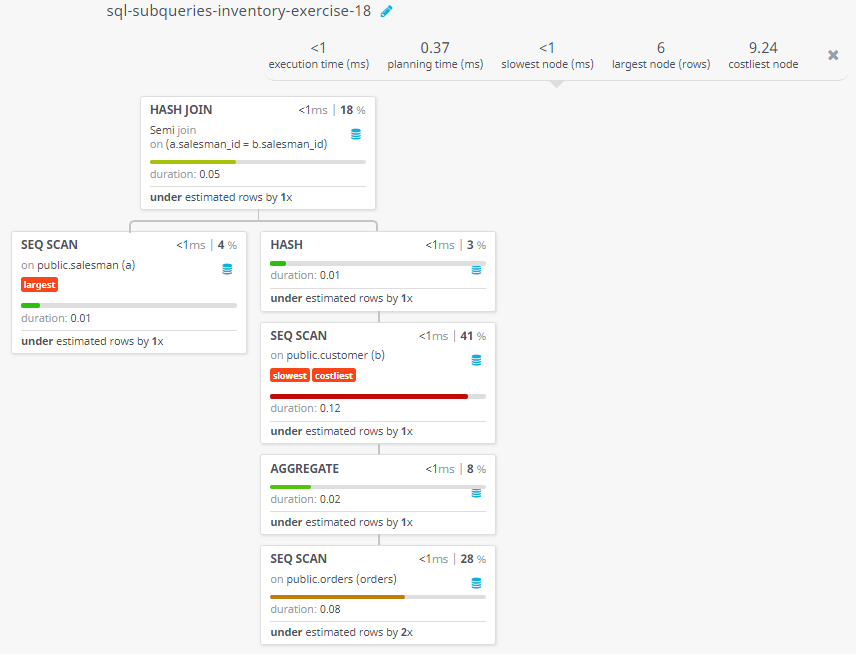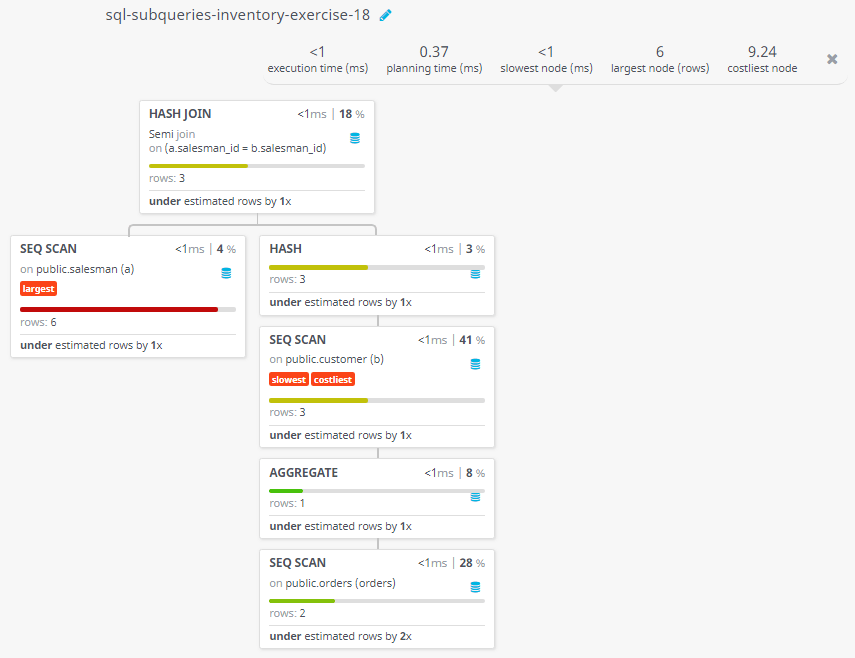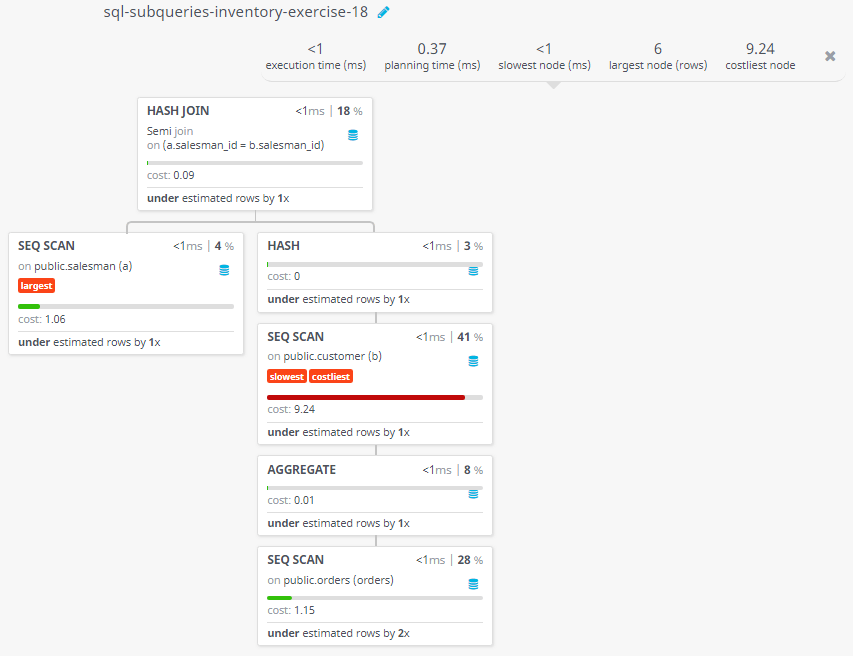SQL Exercises: Show all salesmen with more than one order
18. Find Salespeople Handling Customers with Multiple Orders
From the following tables write a SQL query to find the salespeople who deal the customers with more than one order. Return salesman_id, name, city and commission.
Sample table: Salesmansalesman_id name city commission ----------- ---------- ---------- ---------- 5001 James Hoog New York 0.15 5002 Nail Knite Paris 0.13 5005 Pit Alex London 0.11 5006 Mc Lyon Paris 0.14 5003 Lauson Hen San Jose 0.12 5007 Paul Adam Rome 0.13Sample table: Orders
ord_no purch_amt ord_date customer_id salesman_id ---------- ---------- ---------- ----------- ----------- 70001 150.5 2012-10-05 3005 5002 70009 270.65 2012-09-10 3001 5005 70002 65.26 2012-10-05 3002 5001 70004 110.5 2012-08-17 3009 5003 70007 948.5 2012-09-10 3005 5002 70005 2400.6 2012-07-27 3007 5001 70008 5760 2012-09-10 3002 5001 70010 1983.43 2012-10-10 3004 5006 70003 2480.4 2012-10-10 3009 5003 70012 250.45 2012-06-27 3008 5002 70011 75.29 2012-08-17 3003 5007 70013 3045.6 2012-04-25 3002 5001Sample table : Customer
customer_id cust_name city grade salesman_id ----------- ------------ ---------- ---------- ----------- 3002 Nick Rimando New York 100 5001 3005 Graham Zusi California 200 5002 3001 Brad Guzan London 100 5005 3004 Fabian Johns Paris 300 5006 3007 Brad Davis New York 200 5001 3009 Geoff Camero Berlin 100 5003 3008 Julian Green London 300 5002 3003 Jozy Altidor Moncow 200 5007
Sample Solution:
-- Selecting all columns from the 'salesman' table (aliased as 'a')
SELECT *
-- Specifying the table to retrieve data from ('salesman' as 'a')
FROM salesman a
-- Checking the existence of records in a subquery
WHERE EXISTS
-- Subquery: Selecting any record from the 'customer' table (aliased as 'b') where 'salesman_id' matches the outer query's 'salesman_id'
(SELECT * FROM customer b
-- Specifying the table to retrieve data from ('customer' as 'b')
WHERE a.salesman_id = b.salesman_id
-- Checking the condition that the count of orders for the customer is greater than 1
AND 1 <
-- Subquery: Counting the number of rows in the 'orders' table where 'customer_id' matches the outer query's 'customer_id'
(SELECT COUNT (*)
FROM orders
WHERE orders.customer_id = b.customer_id)
);
Output of the Query:
salesman_id name city commission 5001 James Hoog New York 0.15 5002 Nail Knite Paris 0.13 5003 Lauson Hen San Jose 0.12
Explanation:
The said SQL query that selects all columns from the 'salesman' table (aliased as 'a') where there exists at least one record in the 'customer' table (aliased as 'b') where the "salesman_id" value in 'a' is equal to the "salesman_id" value in 'b' and the subquery returns a count of the number of records in the 'orders' table that have a "customer_id" value equal to the "customer_id" value in 'b' and this count is greater than 1.
It is using the EXISTS clause to check if there is at least one record in the customer table, where the salesman id of the salesman table and customer table match and the customer has more than one order in the orders table. The subquery returns a count of the number of orders for each customer, and the main query retrieves the rows from the salesman table for the salesman who have at least one customer with more than one order.
Go to:
PREV : Find Salespeople Handling Only One Customer.
NEXT : Find Salespeople in Cities with at Least One Customer.
Practice Online
Sample Database: inventory
Query Visualization:
Duration:
Rows:
Cost:
Contribute your code and comments through Disqus.
What is the difficulty level of this exercise?
Test your Programming skills with w3resource's quiz.




